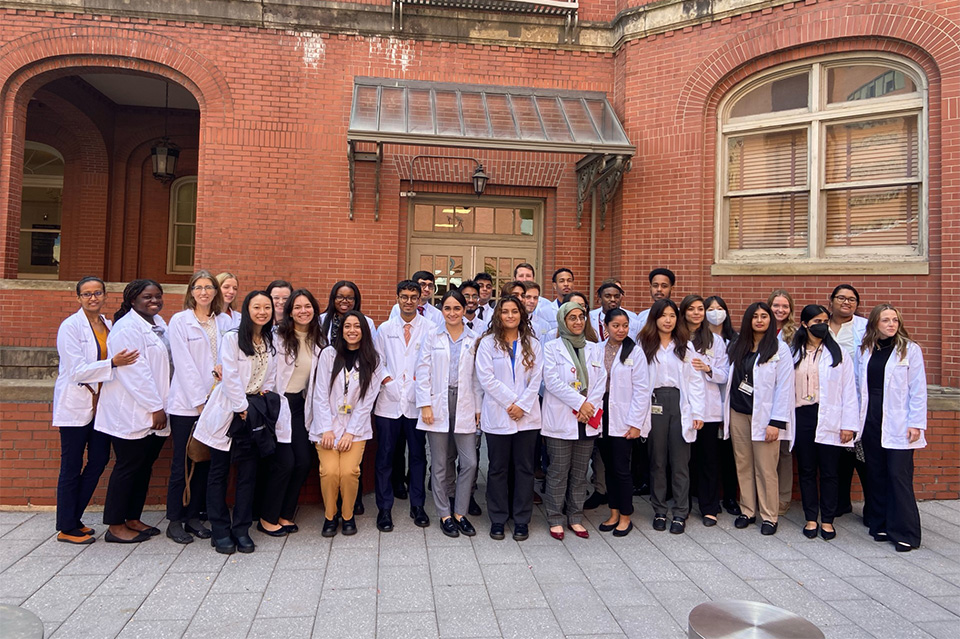Observations of the Clinical Pharmacy Profession
Written By: Rachel Hall, second-year student pharmacist
Early in the fall semester, I had the opportunity to visit the pharmacy at Johns Hopkins Hospital as part of the School of Pharmacy’s Abilities Lab 3 course. This opportunity was coordinated by our faculty members, Agnes Ann Feemster, PharmD, BCPS, assistant dean of the experiential learning program and associate professor in the Department of Practice, Sciences, and Health Outcomes Research, and Tricia Ross, PharmD, MEdHP, BCACP, clinical associate professor and Johns Hopkins Hospital experiential education coordinator
Students were paired with a clinical pharmacist, attended patient care rounds, and received a tour of pharmacy areas. As second-year student pharmacists, we are in an important phase of pharmacy school where we are learning about the wide variety of career options.
Previously, I had some interest in working in a hospital. This visit only furthered my interest in pursuing this route. Here are three takeaways from the visit.
As the “medication expert,” pharmacists improve patient care.
The pharmacist who I shadowed on the health care team was responsible for reviewing every patient’s chart. As medication experts, pharmacists make sure each patient’s medications are the most efficient medicine and dosage for their diagnosis. One time, the pharmacist noticed a comment in a patient’s chart about nausea side effects, so she asked the physician to change to a more appropriate dosage form. The physician agreed.
The pharmacist also chose some therapies based on side effects and out of pocket costs for the patient. For example, the pharmacist changed an expensive antibiotic to two less expensive agents so the patient could be accepted at a care facility.
Pharmacists catch the small medication details that other health professionals may not, and this helps to greatly improve patient care. Going in, I had a fear that pharmacists would not be as respected in health care as we should be, but I was quickly proven wrong. The pharmacist was seen as the “go-to” person for physicians and nurses when it came to patient medications and education.
Interprofessional communication is key in the hospital.
In the previous example about nausea side effects, I saw how interprofessional teamwork could quickly improve patient care. Given how busy the hospital was, it was amazing to see the team members all on the same page. The pharmacist oversees about 36 patients, and she was up to date on each one, as were the physicians, nurses, physical therapists, and other team members. That helped make rounds more efficient, so they only needed to discuss recent changes or events.
Clinical pharmacists have deep knowledge about their work.
It’s clear that clinical pharmacists have years and years of education, experience, and expertise. I know I still have a lot of education ahead of me, but my preceptor was so knowledgeable about many topics I had no clue about. She was truly an expert on the gastrointestinal tract, with topics such as Whipple procedures or what vaccines to receive following a bone marrow transplant or splenectomy. I was in awe and inspired because I could see how much knowledge is required to be a clinical pharmacist.
I really enjoyed the shadowing experience, as it gave me a real-life example of what I will do if I work in a health-system setting. It is one thing to hear about it in class, but another to witness it in action, and I’m excited to continue pursuing the clinical pharmacist career path.

